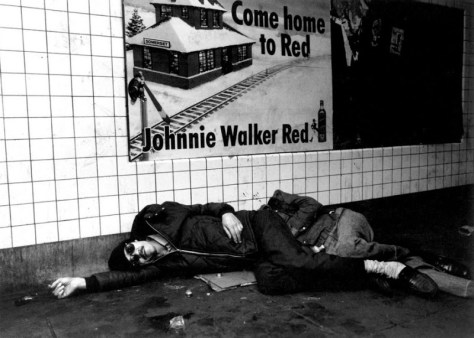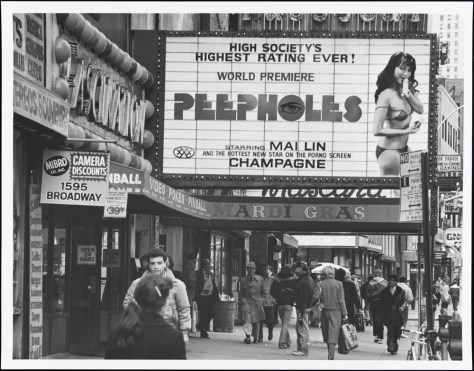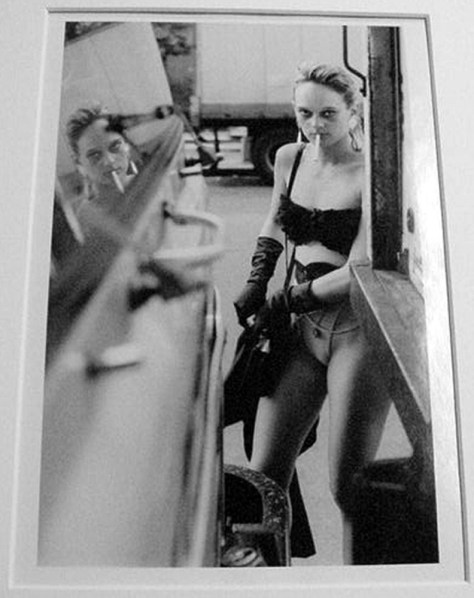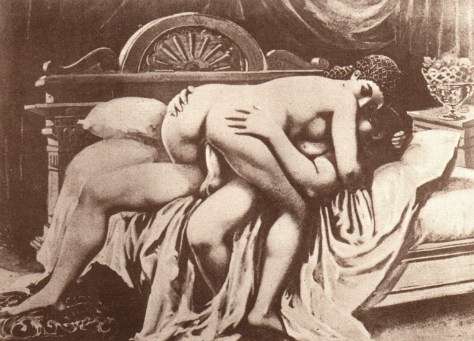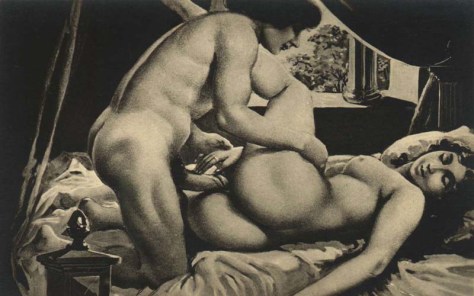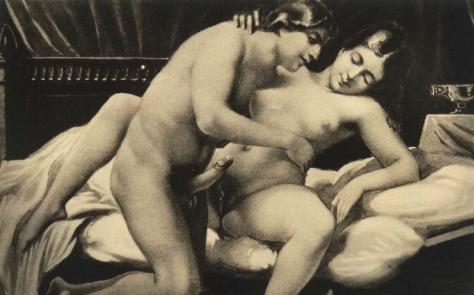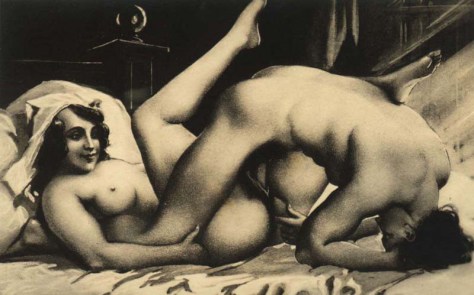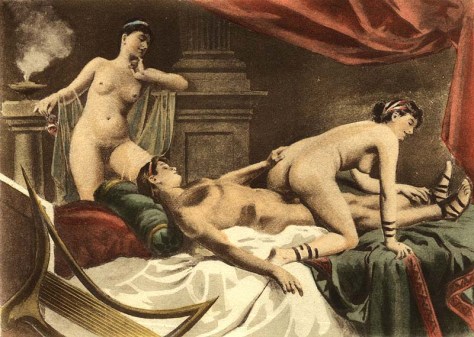Getting Frank With Frankie
By Spaceman Ross – ORIGINAL HUMOR
(A Fetpix original movie)
Setting: The Supermax Federal Penitentiary in Florence, CO, March 22, 2020
Join us as we present an exclusive never before seen interview with Frank “Frankie the Phantom” Fernanderson. In this cannot-be-missed conversation, the infamous serial killer turned New York Times best selling author offers a candid look at his life, career, and insights on what it takes to make it in 2020. You won’t want to miss what this Public Frenemy #1 has to say!
Interviewer: Thank you for allowing us the opportunity to interview you for this film.
Frankie: Sure, no problem. I’m not too busy these days, haha.
Interviewer: Is this the first time you’ve been interviewed for a feature film?
Frankie: Yeah. It’s always nice when I can give something back to the community that has offered me countless hapless victims over the years. Without them, I wouldn’t be where I am today.
Interviewer: Interesting. Have you ever given back to your community before?
Frankie: Oh yeah, years ago I started doing involuntary mercy killings, ya know, for some poor lonely shut-ins with no frequent visitors. Sometimes I’d be the only face they’ve seen in weeks, depending on their eyesight. With their medical bills, crippling arthritis and what-not, I think they appreciated it. They know it’s either me or cancer, so… I mean, it’s kinda a no-brainer, really. I once heard a saying “we can’t help everyone, but everyone can help someone” and that really stuck with me. And it was great practice.
Interviewer: You must’ve practiced a lot. Last we heard it was 86 murder victims and counting, over a span of about thirty years. How do you account for that kind of unmatched success?
Frankie: Well, yeah, practice helps, haha. Also passion, hard work and dedication to the craft. In tragedy, it really comes down to misdirection. If ya can master that… See, I might wield a revolver to get a victim’s attention, or get’em into the van. And they’re like oh ok, I see where this is goin’, I’m gonna get shot. Then, when I got’em right where I want‘em… the knife comes out. And… it’s all about timing. I get a kick outta seeing the look on the victim’s face when it “clicks” ya know? The instant they get it, that’s the big pay-off for me.
Interviewer: I’d like to ask about something you said during your trial. You seemed to have some strong opinions about one of your contemporaries, The DC Sniper. Care to comment on that?
Frankie: Oh God… talk about a piece of work. See, in the tragedy world, the so-called “DC Sniper” is the Carrot Top of the industry. He’s a total no-talent hack. If he were here I’d tell him so right to his stupid face. For him, every day was “bring-your-kid-to-work-day.” I mean, come on… Everyone knows all the Greats worked alone. Somebody shoulda told that guy- bodies of your victims are what go in the trunk, not your scared-ass, hiding with a kid! And what kinda example does that set for this young impressionable mind, anyway? If I had a kid with me, I’d want’em to grow and develop their own style, not piggyback off my career. I gotta give’em credit though, I wouldn’t be gettin’ in his car at age 15. I don’t know how he got the kid to do that!
Interviewer: After such a long time, so many victims, do you remember your first?
Frankie: Of course, you never forget your first. I remember being pretty scared that first time.. Sometimes I’d pick a venue, somewhere easy for amateurs to break into the scene. I’d get my routine all worked out, and then when the time came I’d just freeze up. Until I eventually got up the nerve to go through with it when I was 22. Then it was smooth sailing. And I’ll tell ya, all the fame and notoriety, all that shit, I’d give it all up just to go back and do that one again. Some killers say you can never quite get that high ever again. The rest of your career you’re always chasin’ it, with every horrendous act.
Interviewer: When you were just starting out, was there anyone who inspired you?
Frankie: Oh yeah, there was one guy who I read about… ya know, when his work became public. I remember thinking yeah, this guy gets it. I wrote a letter to him once. I won’t tell ya who it was though. You’ll have to wait for my next book haha!
Interviewer: Did you get a reply?
Frankie: I did not. Back then, I was kinda bummed about that. But now that I get my own fan letters, I understand. There’s just too many, it’s hard to get to everyone. They come in faster than you can read’em and you only have so much time to write back. It’s great though, knowing you’re an inspiration to the younger generation just comin’ up.
Interviewer: In your wake of destruction in Nevada, there seem to have been a lot of bodies found in and around Las Vegas. Can you tell us a bit about that?
Frankie: Vegas, Baby! Man, I used to hit the strip… oh I don’t know… maybe once every two years. Usually when I was in a slump. Ya know, everybody gets “killer’s block,” no matter how good you are. They just don’t wanna admit it. Never in my life have I seen more risk-embracing victims. They’d go for anything! I mean, shit, here ya got people willing to risk all their money, their marriages, disease, overdose… anything that was good in their lives, they were willing to lay it on the table, just for a thrill. Talk about easy pickins. They’d literally gamble away anything, including their life. I remember this one guy, he was convinced right up until the closer that I was driving him to some high stakes illegal poker game. Yeah… he got the “high stakes” part right! As soon as they announced “what happens in Vegas stays in Vegas” every big-shot, every wannabe, and hack wanted in on that action. And the beauty part of it all? Countless acres of unsurveilled desert. You really could make sure that what happened in Vegas stayed in Vegas, or at least the surrounding desert, ya know what I mean?

Frankie outside a gas station in Las Vegas, 1984 (image courtesy Penchant Publishing)
Interviewer: You mentioned “hapless victims” earlier. Sounds like that guy was a pretty hapless victim. But have you ever had someone who fought back or hindered your performance?
Frankie: Ah… I call them hecklers. Ya get used to it after a while. It’s all about control. Ya wanna always have total control over the room. There’s always gonna be some big-mouth hot-shot, sayin’ “You can’t do this to me, you know who I am?” They may get some digs in, but the last dig is always on them, ya know? The show must go on. The trick to handling hecklers, I found, was to always know your routine inside and out. Don’t let’em sidetrack you. You gotta be able to keep your composure and remain professional. I don’t use gags. Some guys do, and that’s fine if that’s your thing. Personally, I feel you always gotta be open to feedback. I wanna hear what they have to say. It’s more of a thrill if they struggle anyway. Every heckler I dealt with ultimately made me better. …Ya know, scarier, for the next time. It’s how ya grow.
Interviewer: Growth is certainly important in any career. Is there any advice you have for anyone just starting out today?
Frankie: Hmmm… I kinda wish someone had told me when I was just starting out that it really doesn’t do ya much good to watch what other, bigger name guys are doing. It’s all about stayin’ in your lane. Ignore the hype, forget about the guys puttin’ up bigger numbers. There will always be some guy out there who thinks he’s better than you or who makes it look easy for a while. But where’s that guy gonna be tomorrow? Nobody’s invincible. Everything’s going great until one wrong move. That’s all it takes. Then you wake up one morning and the Feds are going through your garbage or diggin’ up your yard. I would say it’s important to remain humble and thankful for every opportunity.
Interviewer: So tell us a little about how things have changed since the early days of your career.
Frankie: The scene’s changed a lot over the years, and not for the better. See, all these kids like your Timothy McVeigh’s and your Ted Kazinsky’s… with their bombs and shit. What is this, Amateur Hour? They seem to have forgotten it’s all about connecting with your victim. I blame Hollywood for a lot of it. All these stupid slasher movies and shit, they’re really degrading to the craft. They make me wanna scream outta anger, not fear! I remember a few guys in here were watching TV one time and there was this cartoon… It was these turtles who somehow knew martial arts… Oh yeah, The Teenage Mutant Ninja Turtles, that’s it. And I’m sittin there watchin’ it, and for some reason they’re all named after famous Italian Renaissance artists, as if that makes any sense. Anyway, all I could think was what if some famous martial arts guy, like Bruce Lee, saw these Ninja Turtles? Anyway, it’s a total mockery of all martial arts. And that’s how I feel about these serial bombers. Back in the Golden Age of Tragedy, when I was comin’ up… We connected with our victims. We used a knife. We used a knife because it was up close, it was messy and it was personal, ya know? Ya wanna see the look in your victim’s eyes before the lights go down, not read about it in the papers the next morning with your fuckin’ coffee. How ya gonna leave a calling card in a pile of rubble? Nobody’s gonna even find it! We were Purists. It was all about the process. Their process, if ya wanna call it that, is just building a bomb and maybe pressing a button. Where’s the art in that? There’s no room for improv there, no fear factor. One minute people are alive, then before they know what hit’em… bang, their dead. There’s no game in their game! When ya lose the personal touches, the work suffers.
Interviewer: With so many years of bloodshed under your belt, especially with some of your earliest victims being neighbors, how do you manage to remain unnoticed and slip through the cracks for so long? What was your relationship with your neighbors?
Frankie: What would my neighbors say about me? Well I was a quiet guy, kept to myself mostly. No wife or kids. My house didn’t have a basement so I built a creepy-lookin’ shed in the backyard. Had like five padlocks on it. Nobody asks questions. They’re too self absorbed with their own lives to worry about the guy next door. As long as I kept my lawn mowed. That seemed most important to them. I had the tidiest lawn in my neighborhood. It’s all about quality fertilizer (wink.) After a while though, your local neighborhood victims, well… it gets too easy. Ya gotta challenge yourself, I think. If ya really wanna make a name for yourself in this business ya gotta branch out. Big cities are where a guy like me can really kick-start a great career.
Interviewer: Speaking of cities, besides Vegas you seem to have spent a good deal of time working in New York. Tell us about that.
Frankie: Man. New York City. Whew. I moved there when I was about 28-29 years old. New York in the 80’s was like an all-you-can-eat buffet for guys like me, know what I mean? Things were so fucked up there, you could’ve killed somebody in New York back in 1987 and they’d just now be getting around to questionin’ ya. That’s how many open cases there were. City that never sleeps? They’re sleepin’ after they meet me, that’s for sure. Permanently. It’s true what they say, you really could be anything you wanted in New York. Of course, the rampant corruption didn’t hurt in my business. You could… back in those days, you could literally put a body bag out front with your regular trash. They’d come, pick it up, one guy on each end, throw it into the back of the trash truck and drive away, no questions asked! It was unbelievable. I swear I oughtta send a thank-you note to the Department of Sanitation for all their support back then!
Interviewer: Rape was also a big problem in New York back then. You don’t seem to have an interest in that genre, as opposed to some of your contemporaries. Why is that?
Frankie: Yeah, I know the kinda guys you mean… It was never about the raping for me. Other guys, like Bundy, they relied on it too much in my opinion. It’s cheap, it’s shocking, sure, but it has no value and it’s disrespectful to women, I think. I’d like to see more women in the business, I think they could bring a lot to the table. But those guys just give it a bad name. I don’t know, the deal I signed with the devil didn’t have a rape clause, I guess. The true Greats, guys like Jack The Ripper, they didn’t do rape. They didn’t need to do rape. Torture? Mutilation? Sure. That work stood on its own merit. That’s who I aspired to be like when I was comin’ up. To each his own I guess, but it does nothin’ for me.
Interviewer: Speaking of women, and in a broader sense relationships, did you have any romantic involvement? You said earlier you didn’t have a wife or children, thankfully, but otherwise?
Frankie: Ya know, when you’re out there puttin’ in work, you’re on the road sometimes 200+ days a year. That’s no way to have a girlfriend or a family or whatever people are doin’. I had a couple of ladies in a few cities, but nothin’ serious. My first and only true love has always been my work, ya know? I’m one of those guys haha.
Interviewer: Before we wrap up, I wanted to touch on something our viewers have been asking us. How did you come to be known as “Frankie The Phantom?”
Frankie: It all started about ten years ago when the papers started callin’ me “The Phantom.” That’s when I knew, Ok, I’ve really made it. I think it was because I was a master of making sure there were absolutely no witnesses, ever. All of a sudden it was like Phantom this and Phantom that. TV, radio, the news… I couldn’t get away from it. But they didn’t know my first name was actually Frankie and that Frankie the Phantom would’ve sounded a million times better! So ya know, like those kids did with the Manson thing, the Helter Skelter shit on the wall, ya know… I was 16 when that happened and I guess it made an impression on me. So one night I was in a house, killin’, and I was like alright, now’s the time to let’em know it’s Frankie the Phantom. So I just took some blood from that one guy and wrote really big on his dining room wall right above where I left his corpse, “Frankie The Phantom.” I still have the newspaper article with the image of that on the front page. And the rest, as they say, is history. Manson got all this press, so I knew that’s how ya become a household name. It was a bonus getting to offer a tribute to one of the Greats at the same time.
Interviewer: Wow. Amazing. And the rest is certainly history indeed. A tireless investigation, lengthy trial, and what would ultimately lead you to writing the most critically-acclaimed serial killer book written to date.
Frankie: Yeah, that and paid housing for the rest of my life.
Interviewer: Is there anything you’d like to say to our viewers?
Frankie: Buy my book! Haha, nah just kiddin’, you’re already buyin’ it. And I love ya for it. Follow me on Twitter @TheRealFrankie666, keep serial killing weird, serial killer lives matter and be the carnage you want to see in the world. That’s it. Interview’s over.











